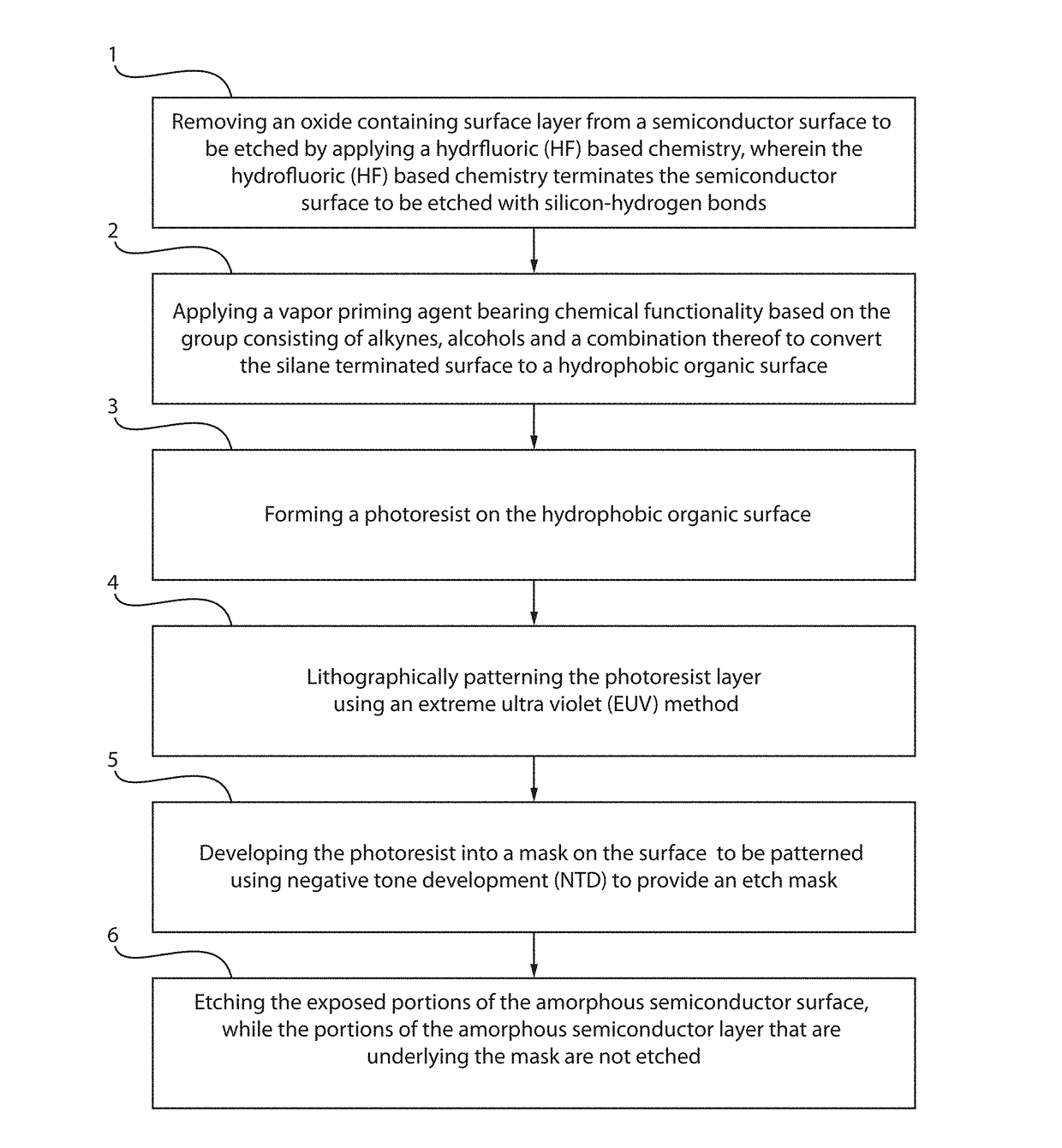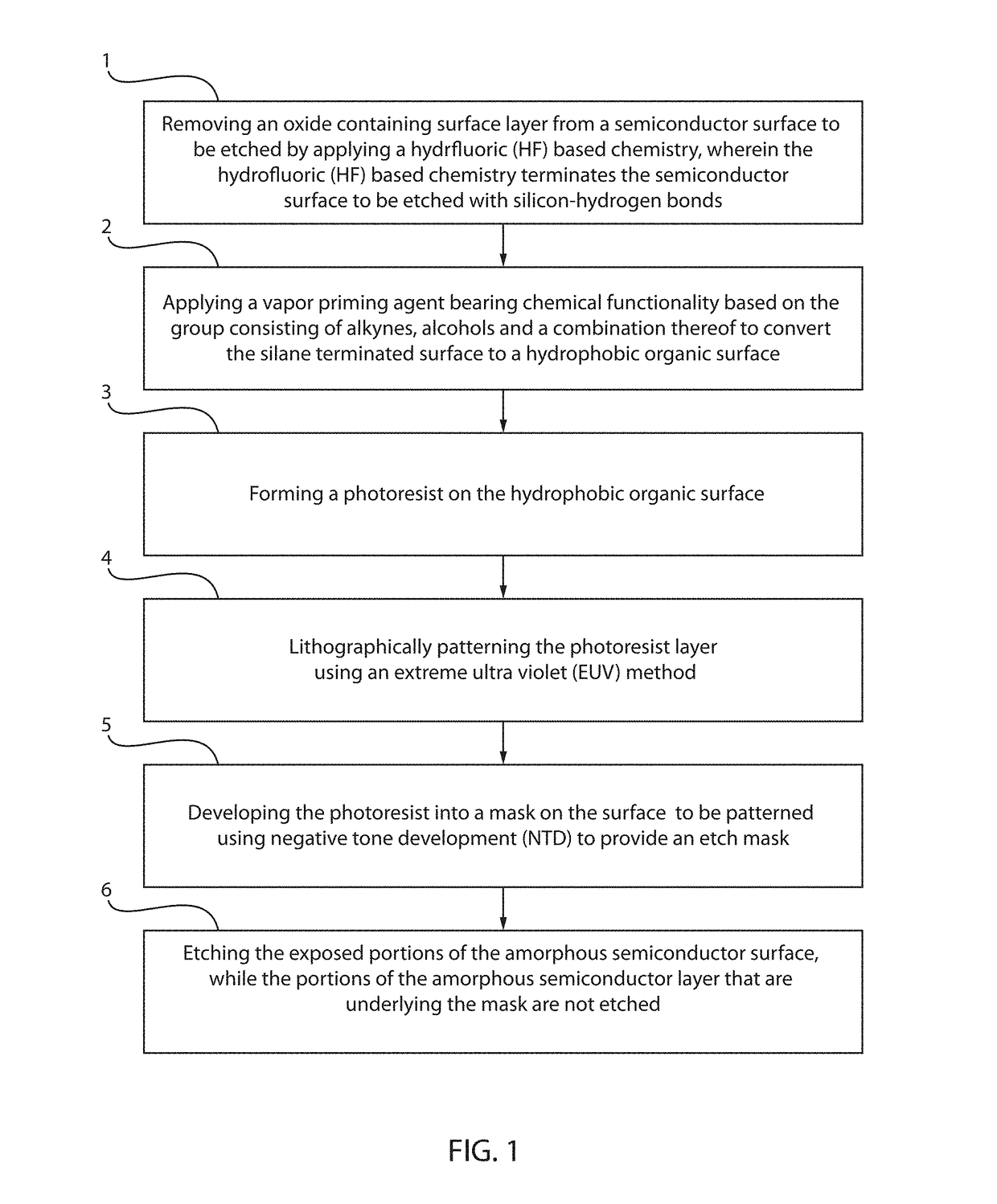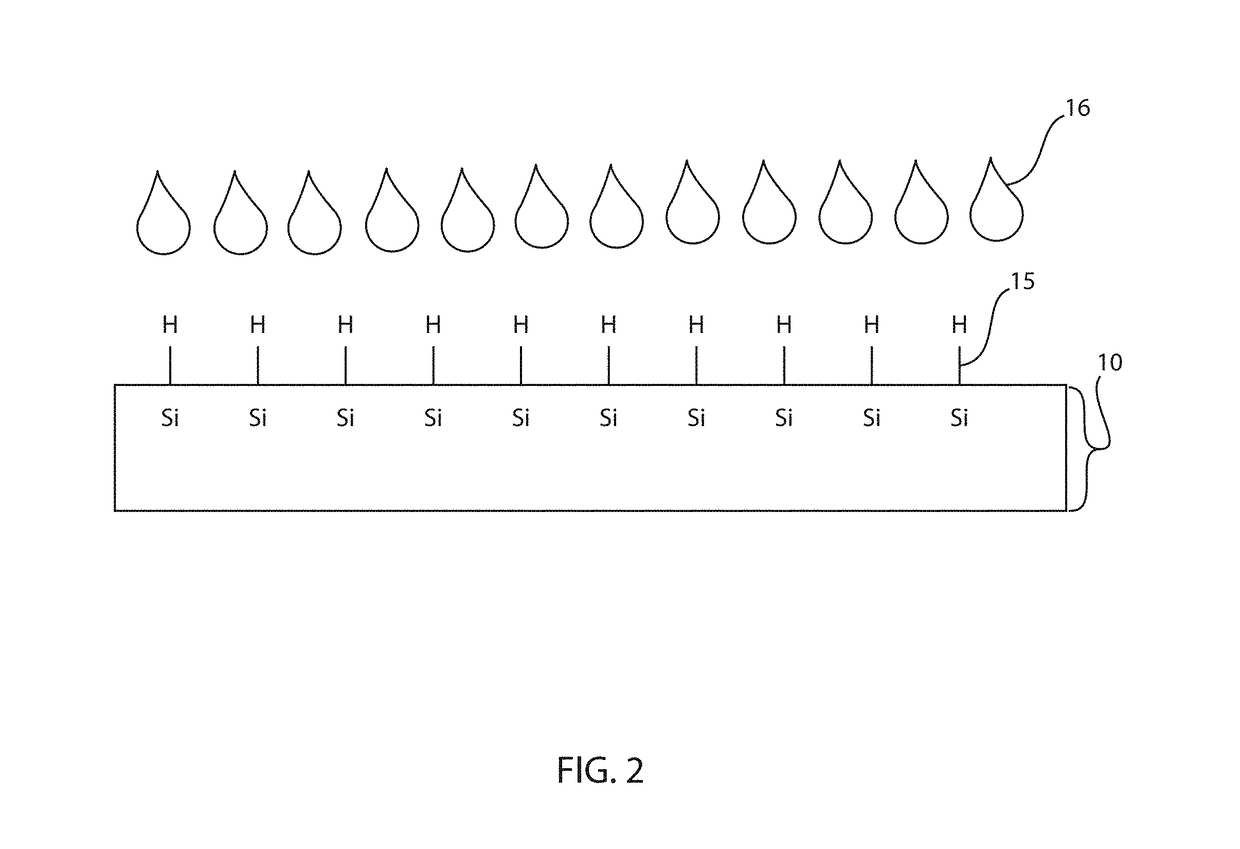Method to improve adhesion of photoresist on silicon substrate for extreme ultraviolet and electron beam lithography
a technology of electron beam and photoresist, which is applied in the field of lithographic materials for extreme ultraviolet (euv) and electron beam (ebeam) lithography, can solve the problems of poor adhesion of euv resist structures to silicon layers, and the standard hmds vapor priming process is insufficient at improving so as to improve the adhesion of high resolution euv patterns and improve patterning
- Summary
- Abstract
- Description
- Claims
- Application Information
AI Technical Summary
Benefits of technology
Problems solved by technology
Method used
Image
Examples
Embodiment Construction
[0024]Principles and embodiments of the present invention relate generally to fabricating microelectronics structures, and the resulting structures formed thereby, using extreme ultraviolet (EUV) lithographic and electron beam (E-beam) processes. Patterning of small features generated by extreme ultraviolet (EUV) and E-beam lithography can be limited by a variety of factors, from the photoresist over the substrate to the developer.
[0025]The methods and structures described herein provide for improved adhesion promotion for photoresist material layers used in EUV and R-beam lithography. In some embodiments, the method includes stripping the top surface oxide layer, e.g., silicon oxide (SiOx) layer, from a silicon containing layer, or other type IV semiconductor surface, with a hydrofluoric containing chemistry, such as diluted hydrofluoric acid (dHF), to generate a silane (SiH) terminated silicon surface and delivering a vapor priming agent bearing chemical functionality based on alk...
PUM
 Login to View More
Login to View More Abstract
Description
Claims
Application Information
 Login to View More
Login to View More - R&D
- Intellectual Property
- Life Sciences
- Materials
- Tech Scout
- Unparalleled Data Quality
- Higher Quality Content
- 60% Fewer Hallucinations
Browse by: Latest US Patents, China's latest patents, Technical Efficacy Thesaurus, Application Domain, Technology Topic, Popular Technical Reports.
© 2025 PatSnap. All rights reserved.Legal|Privacy policy|Modern Slavery Act Transparency Statement|Sitemap|About US| Contact US: help@patsnap.com



